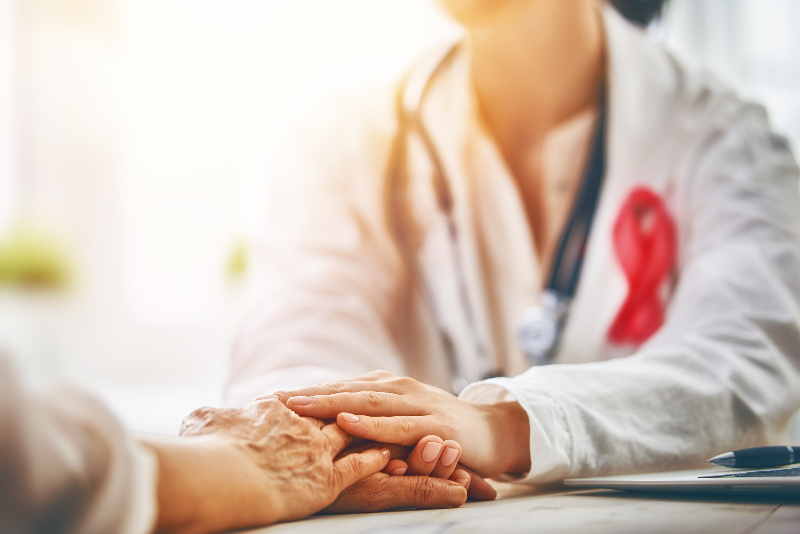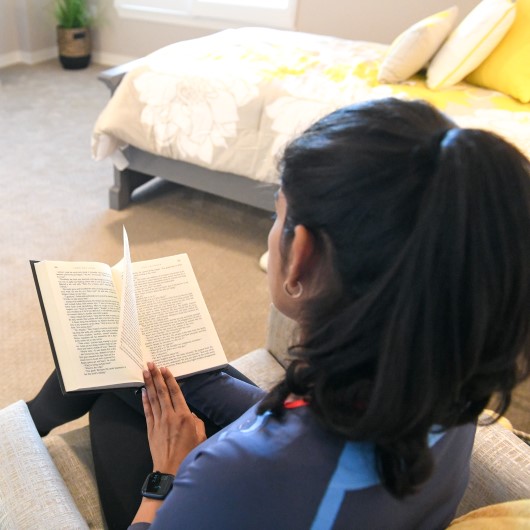6 Questions Every Woman Should Ask About Breast Cancer

October 19, 2019
Did you know that every two minutes a woman in the United States is diagnosed with breast cancer, and one woman will die of the disease every 13 minutes? According to the National Breast Cancer Foundation, breast cancer is the most commonly diagnosed cancer in women, and the second leading cause of cancer deaths among women.
Early detection is key to saving lives. Here is what every woman should know about breast cancer screening.
What Are Dense Breasts?
Dense breast tissue refers to the appearance of the breast on a mammogram. “Dense breast tissue is common and not abnormal, but can make it harder to find cancers with mammography and may slightly increase your risk of developing breast cancer,” says Gail Starr, M.D, M.S.Ed, a radiologist and chief of breast imaging at the Betty Torricelli Institute for Breast Cancer at Hackensack University Medical Center. For some women, breasts become less dense with age. Many women assume their breasts are dense because they are firm, but density isn’t based on how breasts feel. Breast density can only be determined by the radiologist who reviews your mammogram.
If your mammogram report states you have dense breasts, talk to your doctor about next steps. “There is a slightly higher incidence of breast cancer in women with dense breasts, so you may need further screening such as an ultrasound or MRI,” says Yolanda Tammaro, M.D., breast surgeon at Ocean University Medical Center and Southern Ocean Medical Center.
What Are the Facts About Early Detection?
Thanks to early detection tools, advances in treatment and improvements in the quality of life for people living with breast cancer, a diagnosis doesn’t have to be devastating.
The five-year survival rate for people with breast cancer is 89 percent, according to the American Cancer Society, but the stage during which the cancer is detected is critical. The earlier the cancer is detected, the more options there are for treatment, including less extensive options and the survival rates are better.
What Are the Benefits of 3D Mammography?
3D mammograms, also known as tomosynthesis or “tomo,” can be a helpful screening tool for all women, but especially those with dense breasts. The procedure is exactly the same as a regular mammogram but may take a few seconds more. “Using 3D mammography makes it easier for doctors to catch breast cancer early and detect more cancers, and helps them see the cancer size much better than on a traditional mammogram,” says Deena Mary Atieh Graham, M.D., an oncologist at Hackensack.
That’s because mammography takes pictures from just two angles. By taking images from multiple angles, tomosynthesis can give a more accurate result.
Will Insurance Cover 3D Mammography?
In 2015, Medicare started covering 3D testing for all women, and now that the procedure is gaining popularity, some states mandate that insurers cover the procedure. “Not all do, however, so talk to your insurance provider and your doctor about your options,” says Catherine Campo, D.O., a breast surgeon at Bayshore and Riverview Medical Center.
How Do Genetics Affect Screening?
Women who are at high risk for breast cancer should get a mammogram annually starting at the age of 30, followed by supplemental screening with MRI, according to the National Comprehensive Cancer Network (NCCN) guidelines. High-risk women include those who:
- Have a lifetime risk of breast cancer of about 20 percent to 25 percent or greater, according to risk assessment tools.
- Have a known BRCA1 or BRCA2 gene mutation based on genetic testing.
- Have a first-degree relative (parent, sibling or child) with a BRCA1 or BRCA2 gene mutation, and have not had genetic testing themselves.
- Are 30 or order and have had radiation therapy to the chest when they were between the ages of 10 and 30 years old. These patients should begin mammographic screening 8-10 years after their radiation therapy. For patients between 25 and 30, MRI alone should be performed.
- Have Li-Fraumeni syndrome, Cowden syndrome or Bannayan-Riley-Ruvalcaba syndrome, or have first-degree relatives with one of these syndromes.
How Can You Reduce Your Risk?
“While you can’t prevent cancer, there are certain things you can do to help reduce your risk,” says Denis D’Angelo, M.D., a breast imaging specialist at Bayshore Medical Center.
Next Steps & Resources:
- Meet our clinical contributors: Gail Starr, M.D, M.S.Ed, Yolanda Tammaro, M.D., Deena Mary Atieh Graham, M.D., Catherine Campo, D.O., Denis D’Angelo, M.D.
- To make an appointment with one of the doctors above, or a doctor near you, call 800-822-8905 or visit our website.
- Learn more about breast cancer screening and the comprehensive, compassionate breast cancer care provided at Hackensack Meridian Health.
The material provided through HealthU is intended to be used as general information only and should not replace the advice of your physician. Always consult your physician for individual care.











